
Welcome to a lucky find. Amidst the boring, mundane life, sometimes we come across some things that makes us want to believe in a fairy tale. Be it a song, a picture, a book, a place, a relic – that makes us appreciate our life more, helps us to see how beautiful the world is. A small token that starts a fire inside, helping us find the strength to push through depression and darkness.
A lucky find, to make life bright, inspiring, and memorable.
Follow us on Facebook

The Women: A Novel by Kristin Hannah
Kristin Hannah’s The Women: A Novel is a gripping and deeply emotional exploration of courage, loss, and resilience, set against the tumultuous backdrop of the Vietnam War. At its heart is Frances “Frankie” McGrath, a 20-year-old who joins the Army Nurse Corps with wide-eyed patriotism, only to be thrust into the chaos of a war that reshapes her in ways she could never have anticipated.
From the moment Frankie arrives in Vietnam, the narrative immerses readers in the visceral realities of war: bloody uniforms, desperate cries, and the heavy responsibility of offering solace to dying soldiers. Kristin Hannah masterfully brings these scenes to life, making you feel the grit and intensity alongside Frankie. It’s harrowing, but the friendships she forges with her fellow nurses, Ethel and Barb, are a shining light amidst the darkness. These bonds are as profound as they are necessary, a testament to the human capacity for connection even in the most unimaginable circumstances.
But the war is just the beginning of Frankie’s journey. Returning home, she faces a different kind of battlefield. Instead of gratitude, she’s met with disdain, her service dismissed as unladylike, and her experiences minimized. The stigma cuts deep, leaving her adrift in a world that seems indifferent to her sacrifice. These moments are some of the most heart-wrenching in the novel, especially as Frankie grapples with PTSD and struggles to find her place in a society that refuses to acknowledge her pain.
What makes The Women so compelling is its dual focus: the brutal realities of war and the quieter, but no less intense, battles faced in its aftermath. Hannah’s portrayal of Frankie’s post-war struggles is unflinching, yet it’s this honesty that makes the story so impactful. Frankie’s resilience shines through, and her eventual path to healing—finding solace in sharing her story and honoring the women who served—is a powerful reminder of the strength that lies in vulnerability.
This is not just a novel about war; it’s a celebration of unsung heroes. Kristin Hannah gives voice to the women of the Vietnam War, whose contributions have too often been overlooked. Through Frankie’s eyes, we see their courage, their struggles, and their unwavering humanity. It’s a story that will stay with you long after the final page, offering both heartbreak and hope.
For anyone who loves historical fiction with emotional depth, The Women is a must-read. It’s the kind of book that makes you pause and reflect, not just on history, but on the resilience of the human spirit.
Buy the book from here on Amazon: [link]
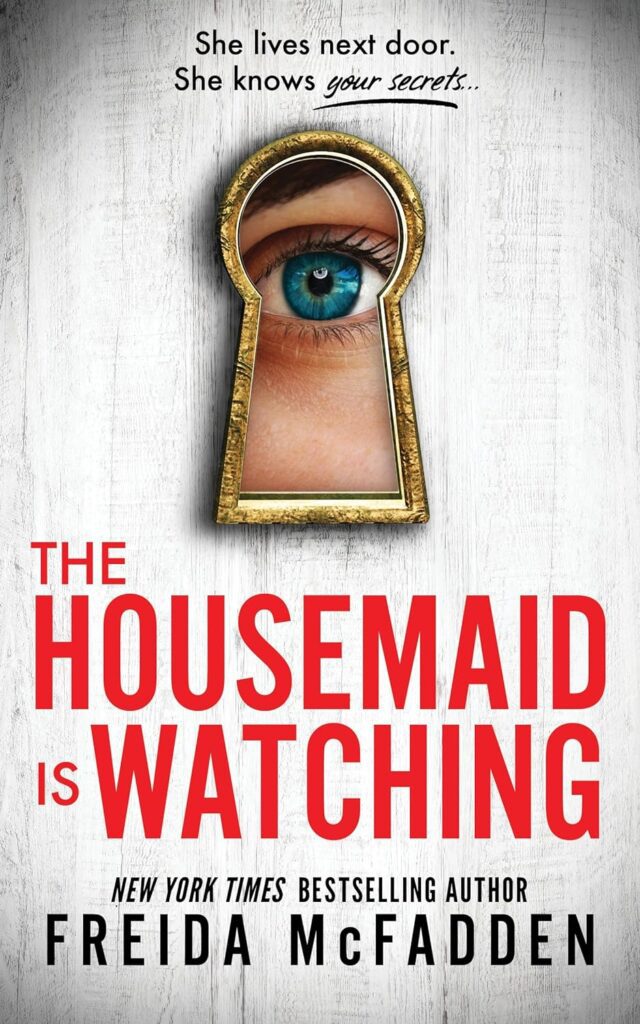
The Housemaid is Watching: A Gripping Look at Suburban Secrets
Freida McFadden’s “The Housemaid is Watching” is the thrilling conclusion (or is it?) to her Housemaid series. We rejoin Millie, who has traded in her housemaid uniform for the cozy life of a suburban homeowner. But beneath the picket fences and manicured lawns, a darkness lurks.
Millie’s past as a housemaid gives her a unique perspective on the goings-on in her new neighborhood. There’s Mrs. Lowell, the overly friendly neighbor with a watchful maid who sends shivers down Millie’s spine. Then there are the strange occurrences – shadowy figures, unexplained noises – that chip away at Millie’s sense of security.
McFadden masterfully builds suspense, drawing you deeper into Millie’s world with each unsettling detail. You’ll find yourself questioning everyone’s motives, wondering who Millie can truly trust. As the story unfolds, secrets begin to surface, and the picture-perfect facade of suburban life starts to crumble.
The novel delves into themes of class, trust, and the lengths we go to in order to maintain appearances. It’s a thought-provoking exploration of human nature, where even the most ordinary people harbor hidden depths.
While the initial chapters establish the idyllic suburban setting, the suspense truly takes hold in the latter half. Twists and turns keep you guessing until the very end, culminating in a shocking revelation that will leave you reeling.
“The Housemaid is Watching” is a perfect read for fans of character-driven psychological thrillers. Millie is a relatable protagonist, and the supporting characters add layers of mystery and intrigue. If you enjoy stories that keep you guessing and challenge your perception of reality, then this book is a must-read.
You can purchase the book on Amazon from this link.
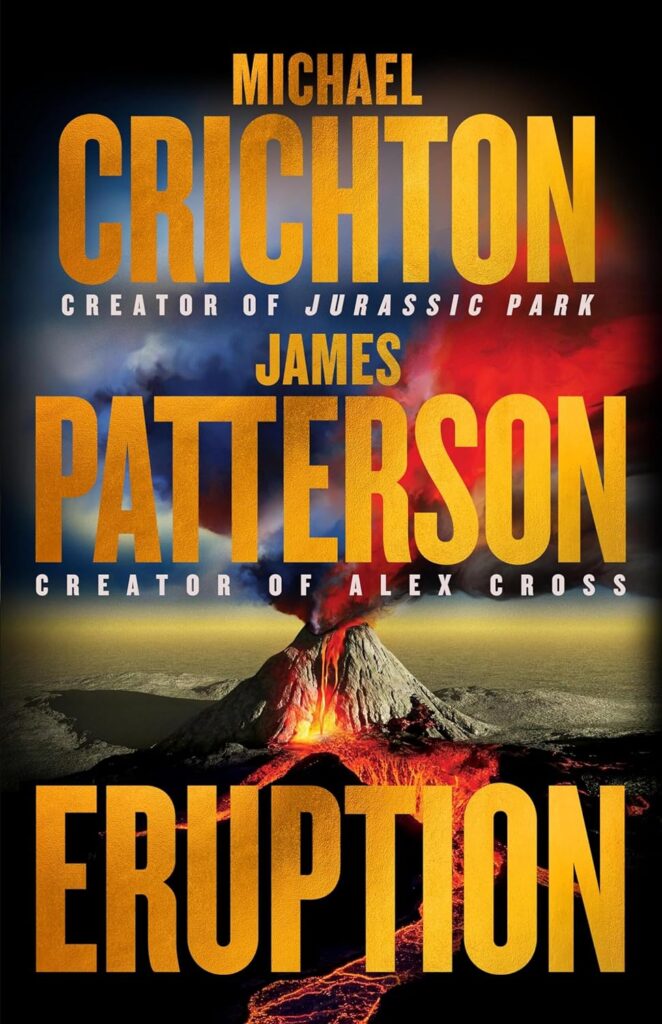
Eruption: A Volcanic Thriller Heats Up the Shelves
The world of thrillers just got a whole lot hotter with the release of Eruption, a collaboration between the titans of the genre, Michael Crichton and James Patterson. This posthumous completion of a Crichton manuscript, finished by Patterson, promises a heart-pounding race against time as a massive volcanic eruption threatens Hawaii – and a hidden secret threatens the world.
The blurb for Eruption paints a picture of dual disasters. The Big Island of Hawaii faces a volcanic eruption of epic proportions, but that’s just the tip of the molten rock. A decades-old military secret lurks beneath the surface, threatening to turn a natural disaster into something far more terrifying.
The opening pages of Eruption waste no time in thrusting you into the heart of the impending crisis. We meet Dr. Amy Lin, a volcanologist stationed in Hawaii, as the ground begins to tremble:
“The tremor hit with a sickening lurch, the trailer swaying like a ship in a storm. Amy scrambled out, heart hammering against her ribs. The normally clear morning sky was choked with a thick, brown haze. In the distance, a plume of ash rose like a monstrous, writhing serpent, blotting out the sun.”
Fans of both authors are sure to be excited. Crichton’s genius for weaving scientific fact into thrilling fiction is legendary (think Jurassic Park), and Patterson is known for his fast-paced, plot-driven narratives. Eruption seems poised to deliver the best of both worlds: a meticulously researched science thriller that keeps you on the edge of your seat. Reviews for Eruption have been glowing. Critics laud it as an “epic thriller” with “breathtaking” scope and characters you’ll root for. Comparisons are being drawn to Crichton’s classic works, with praise for the way it tackles “big themes” alongside the pulse-pounding action.
Is Eruption Right for You?
If you crave a summer read that will take you on a thrilling journey filled with volcanic catastrophe, scientific intrigue, and high stakes, then Eruption should be at the top of your list. So grab your copy, find a comfy spot, and prepare to be swept away by this scorching new tale. If this interests you, feel free to buy it from Amazon using this affiliate link.

Looking back: If He Had Been With Me
We previously posted the review on the novel by Laura Nowlin – If he had been with me. After months, we find ourselves back at it again. Recently, we faced a few comments on how the book touched on the emotions. The story is mostly, of course, if for young adults but the appeal if has cannot be denied. In a literary landscape teeming with coming-of-age narratives, Laura Nowlin’s “If He Had Been With Me” emerges as a beacon of introspection, illuminating the tender intricacies of teenage turmoil and the achingly beautiful landscape of unspoken desires.
You can read the review here. But to recap, the novel is set against the backdrop of suburban adolescence, Nowlin crafts a narrative that transcends the boundaries of typical YA romance, delving deep into the labyrinthine hearts of her protagonists, Autumn and Finny. Their story unfolds with the delicate grace of a flower unfurling its petals, each page peeling back layers of vulnerability and longing.
At its core, “If He Had Been With Me” is a testament to the power of human connection, particularly the indelible bond forged between childhood friends. Autumn and Finny, once inseparable companions, find themselves navigating the treacherous waters of adolescence, grappling with shifting dynamics and unspoken emotions.
What sets this novel apart is its unflinching portrayal of the forlorn feeling that permeates Autumn and Finny’s relationship. Theirs is a connection tinged with longing and regret, a symphony of missed opportunities and whispered what-ifs. Nowlin’s prose drips with the poignant ache of unrequited love, inviting readers to immerse themselves in the tumultuous sea of teenage emotions.
Autumn’s story felt like looking in a mirror, even though she was dealing with a whole different situation with her best friend, Finn. Remember that awkward first love feeling? Nowlin nails it. Stolen glances, nervous texts, the world suddenly feeling brighter – it all came flooding back. But then the heartbreak hits Autumn, and man, did I feel it. That ache in your chest, the anger, the endless “what ifs” swirling in your head – it’s like Nowlin reached into my own teenage angst and splashed it all over the pages.
Here’s the thing, though. Autumn doesn’t just wallow in the sadness. She deals with the loss of Finn, figures out what went wrong with their friendship, and slowly starts to pick up the pieces. It’s a reminder that friendships, just like crushes, can change or even fade away. It sucks, but it’s a part of growing up, right?
What I loved most was seeing Autumn rediscover herself. She hangs out with old friends, makes new ones, and starts figuring out who she is outside of her relationship with Finn. It’s like a kick in the pants, telling you that even though first love might leave you with a scar (or two!), it doesn’t have to define you.
Beyond its narrative prowess, “If He Had Been With Me” serves as a mirror reflecting the multifaceted nature of teenage experience. Through Autumn and Finny’s eyes, readers are granted entry into a world fraught with insecurity, longing, and the perennial quest for belonging. In their journey, we find echoes of our own struggles and triumphs, a reminder that amidst the chaos of adolescence, there exists a thread of connection that binds us all. You can buy the book from here (Amazon link).
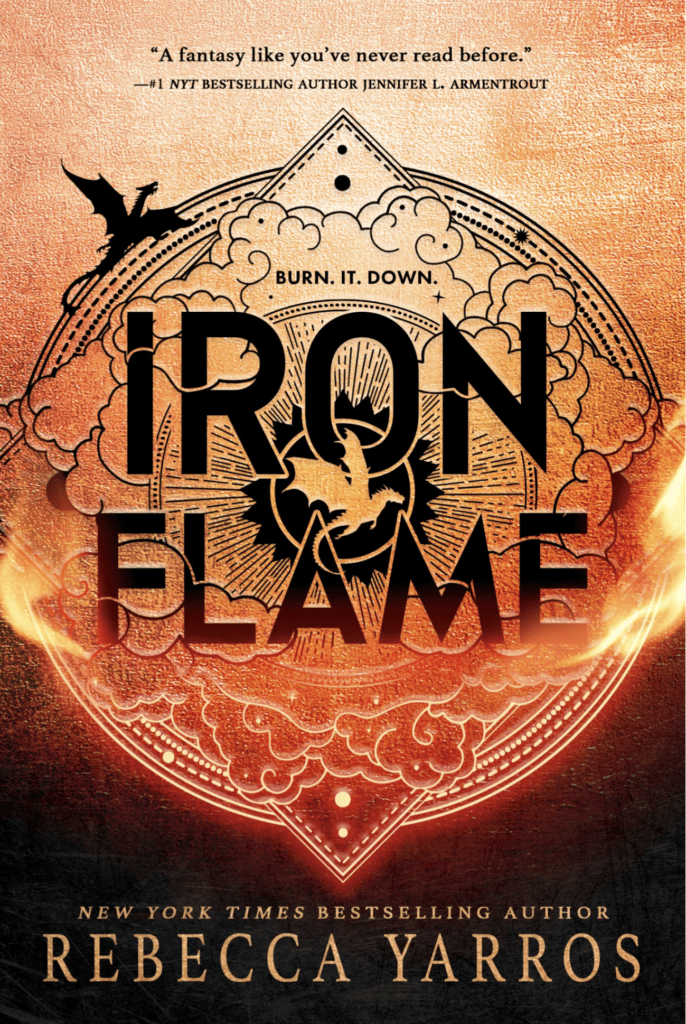
Iron Flame by Rebecca Yarros
As readers eagerly awaited the sequel to “Fourth Wing,” Rebecca Yarros delivered “Iron Flame,” a novel that promised to elevate the Empyrean series to new heights. This sequel not only met expectations but surpassed them by delving deeper into a world of high fantasy, intricate magic systems, and complex cultural and religious backdrops. The narrative, darker and more intense, pushes boundaries, challenging its characters and readers alike.
In “Iron Flame,” Yarros skilfully expands the universe she introduced in “Fourth Wing.” The novel is rich with detailed world-building, introducing readers to a new magic system that is both fascinating and complex. The narrative shifts away from the lighter tones of its predecessor, embracing a gravitas that adds a thrilling edge to the story. However, this depth comes with its challenges. The first half of the book, laden with setup and exposition, may feel slow to some readers. But those who persevere are rewarded with a second half full of twists, revelations, and fast-paced action that barely gives you a moment to breathe.
Character development is another strength of “Iron Flame.” While the novel introduces a plethora of new faces, making it occasionally difficult to keep track of everyone, certain characters stand out brilliantly. Tairn, the sarcastic dragon, steals the show, leaving readers eagerly anticipating his every appearance. Meanwhile, the dynamic between central characters Xaden and Violet, fraught with tension and unexpected developments, keeps the narrative engaging. Each character, from heroes to villains, is meticulously crafted, with their motivations and growth adding layers to the already rich story.
Despite its merits, “Iron Flame” is not without its flaws. The pacing issues and the sometimes overwhelming number of characters can detract from the overall experience. Yet, these aspects do not significantly diminish the novel’s appeal. Yarros’s writing is immersive, her story ambitious, and her world captivating. “Iron Flame” is a testament to her growth as a writer, pushing the boundaries of her storytelling and setting a high bar for the next installment.
“Iron Flame” is a substantial addition to the Empyrean series. It’s a tale that will take you on an emotional rollercoaster, through beautifully dark landscapes and intense, character-driven drama. For those who enjoyed “Fourth Wing,” this sequel is not just a continuation but an evolution, enhancing everything that made the first book compelling and introducing even more to love. It’s a solid 6/10, a must-read for fans of the series and a significant entry in Yarros’s oeuvre. Prepare to be enthralled, frustrated, and ultimately, deeply satisfied as you turn the last page.
You might be interested to read the review on the first book of the series, the Fourth Wing here.
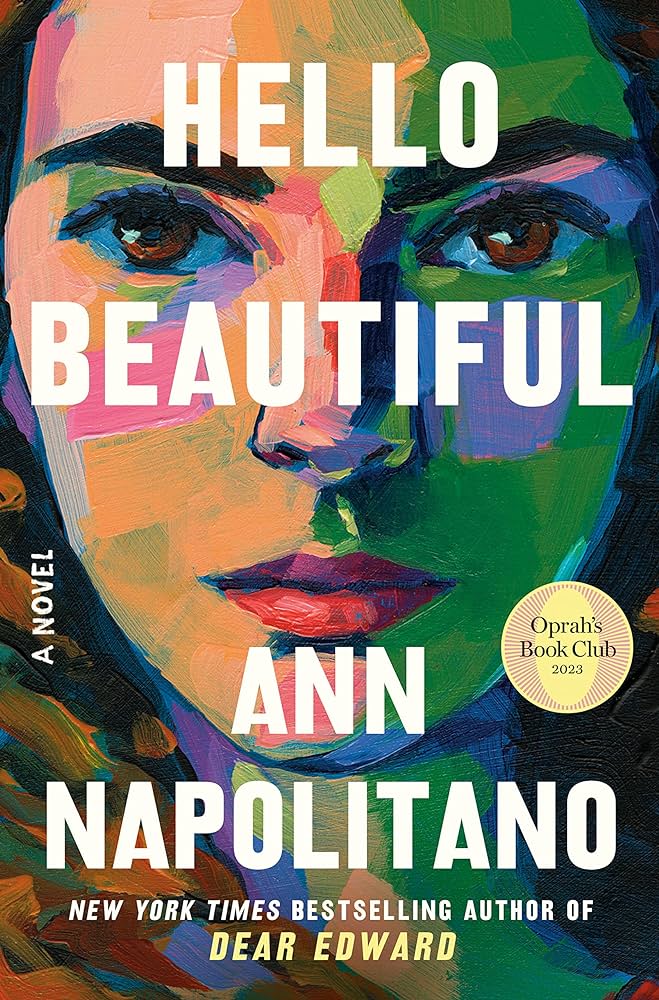
Hello Beautiful by Ann Napolitano
“Hello Beautiful” by Ann Napolitano is a novel that weaves an intricate tale of family, resilience, and the hidden connections that bind us. With a light touch yet a critical eye, Napolitano crafts a narrative that is both profound and engaging, making it a must-read for those who appreciate literature that explores the depth of human emotions and relationships.
Set against the backdrop of Chicago in the 1980s and moving forward, “Hello Beautiful” introduces us to the Padavano family, particularly focusing on the experiences of the four siblings. Napolitano’s writing shines in her portrayal of family dynamics, as each character is meticulously developed, allowing readers to see the layers and complexities of family ties, personal growth, and the impact of past traumas.
One of the most compelling aspects of “Hello Beautiful” is its exploration of beauty in its many forms. Napolitano delves into the concept of beauty, not just in the physical sense but also in moments, relationships, and resilience. The narrative challenges readers to reconsider their notions of beauty and to find it in places they might not typically look.
The book’s strength lies in its character-driven narrative. Each character is rendered with a deep sense of humanity and realism. Readers are invited to witness the characters’ struggles and triumphs, making their journeys resonant and moving. The Padavano siblings, along with a cast of well-drawn secondary characters, navigate life’s complexities, illustrating how family and love can both hurt and heal.
Napolitano’s prose is evocative and rich, filled with moments of keen insight and emotional depth. While the novel covers heavy themes such as loss, betrayal, and the scars of the past, it does so with a grace and lightness that keeps the story from feeling overly burdensome. Instead, there is a steady undercurrent of hope and the possibility of redemption and beauty in the midst of pain.
Unfortunately, I can’t provide an excerpt from “Hello Beautiful,” but I would encourage readers to dive into the book themselves for a firsthand experience of Napolitano’s beautiful prose and the moving story of the Padavano family.
“Hello Beautiful” is a must-read because of its deep dive into the intricacies of family, its exploration of beauty in the mundane, and its unflinching look at the ways we are all connected. Ann Napolitano offers readers a story that is at once universal and intimate, a reminder of the resilience of the human spirit and the enduring power of love and beauty in our lives. Whether you’re drawn to family sagas, character-driven novels, or stories that make you reflect on the larger questions of life, “Hello Beautiful” promises to be a rewarding and moving experience.
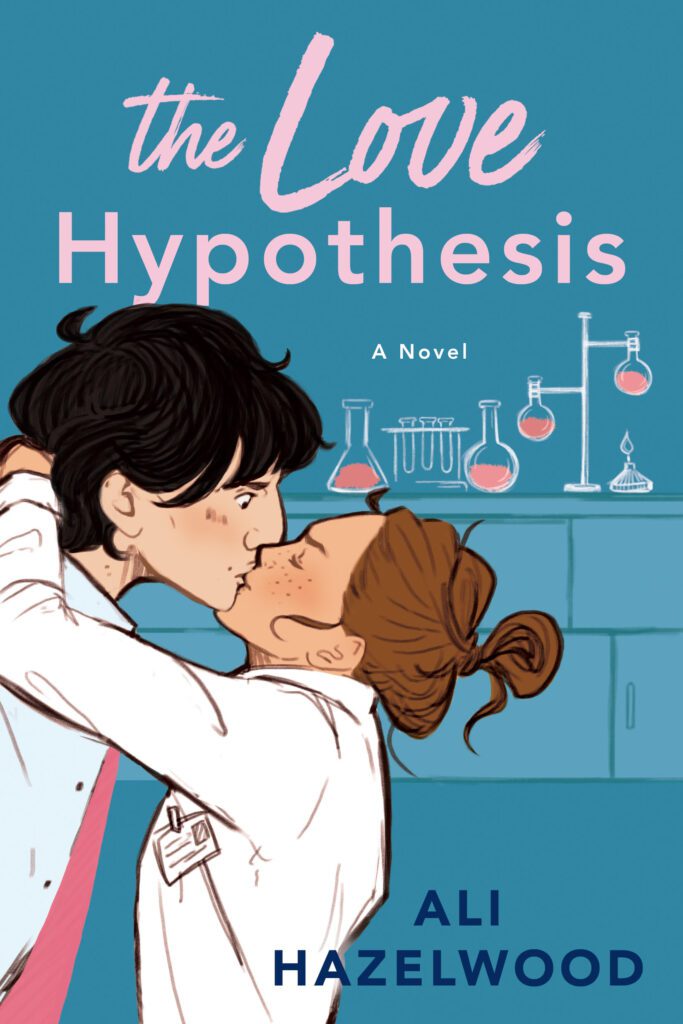
The Love Hypothesis by Ali Hazelwood
“The Love Hypothesis” is a charming novel that has captured the hearts of readers worldwide, known for its unique blend of scientific banter, heartwarming romance, and a captivating storyline that delves into the complexities of love, career, and the pursuit of happiness.
At its core, “The Love Hypothesis” tells the story of Olive Smith, a third-year Ph.D. candidate who doesn’t believe in lasting romantic relationships but wants to convince her best friend that she is indeed dating. Enter Adam Carlsen, a young, brilliant professor known for his demanding nature and high standards. Olive and Adam strike an unlikely pact: pretend to be in a relationship to help Olive’s situation and, in turn, Adam’s professional reputation.
What makes “The Love Hypothesis” particularly delightful is its setting within the world of academia, providing an authentic and insightful look into the pressures and challenges of pursuing a Ph.D., all while balancing the intricacies of human emotions and relationships. The book does an excellent job of portraying the competitive environment of scientific research, the dedication required for success, and the sacrifices that often come with it.
Author Ali Hazelwood’s background in neuroscience adds a layer of authenticity to Olive’s experiences and the scientific community’s portrayal. The dialogue is witty, the situations are humorously relatable, and the chemistry between Olive and Adam is palpable, making readers root for their relationship amidst the ups and downs of their arrangement.
“The Love Hypothesis” is more than just a love story; it’s a narrative about finding courage, embracing vulnerability, and the unexpected ways love can manifest. It speaks to the power of partnership, the importance of communication, and the courage to pursue what truly matters in life. This novel is a testament to the unpredictable nature of love and the beautiful, often humorous journey of finding where we belong, both in love and in life.
Whether you’re a romance lover, a fan of academic settings, or someone looking for a heartwarming and humorous read, “The Love Hypothesis” offers something for everyone. Its blend of science, humor, and romance makes it a unique addition to the contemporary romance genre, ensuring that Olive and Adam’s story will stay with you long after you turn the last page.

A Court of Thorns and Roses
I recently turned the last page of “A Court of Thorns and Roses” by Sarah J. Maas, and I’m left with a mix of awe and contemplation. As someone who dives deep into the realms of fantasy and romance, this book promised an intriguing blend of both and delivered magnificently, albeit with a few thorns of its own.
The story, a loose retelling of “Beauty and the Beast,” introduces us to Feyre, a mortal huntress whisked into the faerie lands of Prythian after a fateful encounter. Maas’s Prythian is a land divided and steeped in ancient magic, politics, and class struggles, which she crafts with an exquisite attention to detail. I found myself completely ensnared by the vivid descriptions of the Spring Court, where most of the story unfolds. Lines like “I threw myself into that fire, into the water, into the air,” encapsulate Feyre’s fiery spirit and her willingness to endure for love and survival.
Feyre’s development throughout the novel is both compelling and relatable. Her resilience, moral dilemmas, and growth are the heart of the story. I particularly admired her evolution from a desperate, downtrodden hunter to a fierce, determined survivor. Her romance with Tamlin, the High Lord of the Spring Court, is equally fraught with passion and turbulence. Their love story, while central to the plot, sometimes follows a predictable path of intense, all-consuming love common in fantasy romances.
However, it’s not without its issues. At times, the pacing felt uneven, with the first half of the book leisurely exploring Feyre’s adjustment to the faerie world and a sudden rush of action towards the end. While I appreciate slow-burn stories, I found myself wishing for a more consistent pace. Moreover, some character decisions and developments seemed convenient, designed more to serve the plot than organic character growth.
The secondary characters, like the enigmatic Rhysand, add layers of complexity and intrigue to the story. Maas excels in creating morally grey characters that challenge Feyre’s, and by extension, the reader’s perceptions of right and wrong. I’m eagerly looking forward to exploring their depths in the subsequent books.
In terms of writing, Maas has a knack for dramatic and emotional prose that, while beautiful, can sometimes veer into the overly descriptive. Yet, it’s hard not to admire her ability to craft a scene so vividly that you feel the magic tingling at your fingertips.
“A Court of Thorns and Roses” is a captivating tale of love, sacrifice, and the courage to change your fate. Despite its few thorns, the book is a testament to Sarah J. Maas’s ability to weave a world you’re reluctant to leave, with characters who linger in your thoughts long after the story ends. Whether you’re a fan of high fantasy, fairy tale retellings, or just a good old-fashioned love story, this book has something to enchant you. And as Feyre learns, sometimes the most beautiful things are worth enduring a few thorns.

The Wager: A Tale of Shipwreck, Mutiny and Murder
The Wager: A Tale of Shipwreck, Mutiny and Murder – is a gripping narrative that draws you in from the first page, plunging you into the harrowing depths of maritime history. The book tells the true story of the British ship HMS Wager, which was wrecked off the desolate coast of Patagonia in 1741. The tale that unfolds is one of survival, desperation, and human nature pushed to its limits.
The author masterfully reconstructs the events leading to the shipwreck and the grim choices faced by the crew. As I turned the pages, I was transported onto the heaving decks of the Wager, feeling the salt spray and the sting of the ferocious winds. The descriptions are so vivid and detailed that I found myself almost hearing the creak of the ship’s timbers and the shouts of the men.
What makes “The Wager” particularly fascinating is its exploration of the crew’s morale and decisions as they attempt to survive in a hostile environment. The book delves into the psyches of these men, examining how isolation and the struggle for leadership can lead to mutiny and murder. It’s a study of leadership, camaraderie, betrayal, and the will to survive against all odds.
One of the most compelling aspects of the book is the moral ambiguity it presents. The author doesn’t shy away from depicting the darker sides of the crew members, including their flaws and the brutal decisions they made. It’s a reminder of how extreme circumstances can strip humanity down to its core.
The narrative is well-paced, with the tension escalating as conditions worsen for the stranded crew. The author balances the pacing by interspersing the survival story with fascinating historical context, giving readers a broader understanding of the significance of the ship’s mission and the maritime world of the 18th century.
However, the book is not without its emotional weight. The accounts of suffering, betrayal, and hopelessness are profoundly moving. It’s a testament to the author’s skill that these moments are handled with sensitivity and depth, making the story resonate on a human level.
People often compare “The Wager: A Tale of Shipwreck, Mutiny and Murder” to the “Lord of the Flies”. Both provide stark examinations of human nature when civilization’s veneer is stripped away. They share a thematic core focusing on isolation, the breakdown of order, and the descent into barbarism, showcasing how quickly societal norms can unravel under duress. However, the narratives diverge in their settings and subjects; “The Wager” is rooted in the historical account of a shipwrecked crew from the 18th century, dealing with adult themes of leadership, mutiny, and survival in a very real historical context. In contrast, “Lord of the Flies” is a fictional account centered on a group of boys, offering a more allegorical look at innate human savagery and the loss of innocence. While “The Wager” provides a historical and somewhat more mature examination of its themes through the lens of actual events, “Lord of the Flies” uses the innocence of children to starkly contrast with the dark themes it explores, presenting a more psychological and symbolic narrative. Both, however, leave the reader with lingering questions about the fundamental nature of humanity and the thin line between civilization and chaos.
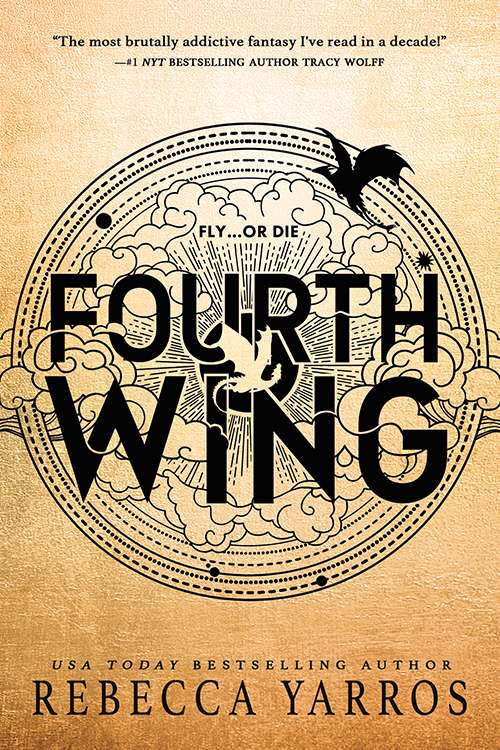
Fourth Wing by Rebecca Yarros
I recently delved into Rebecca Yarros’ “Fourth Wing,” and I must say, it’s quite a fascinating read. This fantasy novel, set in a world torn by war between two kingdoms, offers an intriguing backdrop for an adventurous tale. The setting at the Basgiath War College in Navarre is particularly striking, not just for its military focus but for the way it’s segmented into quadrants – Riders, Healers, Scribes, and Infantry – each bringing its own flavor to the story. This novel, set against a backdrop of a war-torn continent, is a tapestry of intrigue, power struggles, and the unyielding spirit of a remarkable protagonist.
At the heart of this tale is the Basgiath War College in Navarre, a kingdom steeped in tradition and conflict. The college, divided into quadrants each specializing in a unique aspect of warfare, serves as a crucible for our heroine, Violet Sorrengail. Violet, initially destined for a more academic path, finds herself in the midst of the Riders, where the bond between dragon and rider is not just a matter of prestige, but survival. Yarros has a way of making each character leap off the page, but it’s Violet who truly shines. She’s not your typical fantasy heroine; she’s layered, relatable, and her struggles resonate on a personal level. Her journey through the rigorous training and the complex social dynamics of the college is as much about self-discovery as it is about battling external threats.
The dragons in “Fourth Wing” are a highlight. Far from being mere beasts of burden or symbols of power, these dragons have personalities and a depth that’s rarely seen in fantasy literature. The psychic bond they share with their riders adds a mystical, almost intimate layer to the narrative, making each interaction between Violet and these majestic creatures something to savor. While the book delves into the darker aspects of war and power, it’s balanced with moments of lightness. The romance, subtly woven into the fabric of the story, doesn’t overshadow the main plot but adds an additional layer of depth to Violet’s character. It’s a gentle reminder that even in the hardest of times, there’s room for love and connection.
What’s particularly commendable is how Yarros handles the inclusion of Ehlers-Danlos syndrome in Violet’s character. This not only adds authenticity to her narrative but also offers representation in a genre where physical perfection often reigns supreme. Violet’s resilience and determination in the face of her condition make her victories all the more triumphant.
“Fourth Wing” is more than just a fantasy novel. It’s a story about finding strength in unexpected places, the importance of resilience, and the power of forging your own path. It’s a novel that doesn’t shy away from the realities of its world, yet manages to infuse hope and inspiration through its characters and their journeys. It’s a reminder of why we turn to books – to find worlds that both challenge and enchant us, and characters who remind us of the strength and courage we all possess.

Iridescent by Linking Park: A Tale of Cathartic Journey
There are some songs that brings you joy and some like Iridescent that becomes a beacon to overcome struggles in life and guide you in the cathartic journey. At some point in life, we all go through a period where darkness seems to engulf our very existence, and at one point, I found myself grappling with an overwhelming sense of desolation. The walls of my world, once filled with the warmth and light of loved ones, were closing in, their comforting presence fading away. Each day unfolded as a relentless challenge, waking up to a reality where their absence was a constant, painful reminder of what was lost. It was a time when despair seemed to have a suffocating grip on me, making even the simplest acts of daily living feel like insurmountable tasks.
Amidst this engulfing darkness, it was the haunting strains of Linkin Park’s “Iridescent” that emerged like a flicker of light through the oppressive clouds. The song, with its poignant lyrics and stirring melody, resonated deeply. It was as if each word was a direct address to what I was feeling, acknowledging the pain and the struggle of holding onto hope in the face of overwhelming grief. The lyrics, “Do you feel cold and lost in desperation? / You build up hope, but failure’s all you’ve known,” spoke directly to my state of being, articulating the despair that had become my constant companion.
Yet, within the lyrics of Iridescent, I found not just an echo of my pain, but also the strength to fight on, one day at a time. It encouraged me to begin the arduous task of rebuilding myself from scratch, to search for the meaning of life amidst the ruins of my grief. The song’s powerful chorus, urging to “let it go,” became the guiding principle in learning to release the weight of my sorrow and to embrace the possibility of a future still worth living.
This journey of healing led me to a profound realization: the need to set an internal locus of control. I began to understand that while I could not control the losses life had thrust upon me, I could control how I responded to them. It was about looking inward, finding strength in my resilience, and learning to walk alone, albeit with the memories of my loved ones etched in my heart. Music, particularly “Iridescent,” became a sanctuary, a source of peace in the midst of chaos. It was in these melodies that I found solace, a companion in my solitude, and the courage to face each new day. The path to recovery was not linear; it was filled with setbacks and moments of doubt. However, the transformative power of music remained a constant, a beacon that guided me through the darkest corridors of grief towards a place of acceptance and newfound strength.
In this journey, I learned that while we may have to walk some paths alone, we are never truly bereft of support. It exists in the memories of those we’ve lost, in the art that touches our souls, and in the inner resilience that we all possess. The journey through grief and rebuilding is a testament to the human spirit’s capacity to endure, to find light in the darkest of places, and to emerge with a deeper understanding of life’s intricate tapestry.
Here is the music video if you have not seen it:
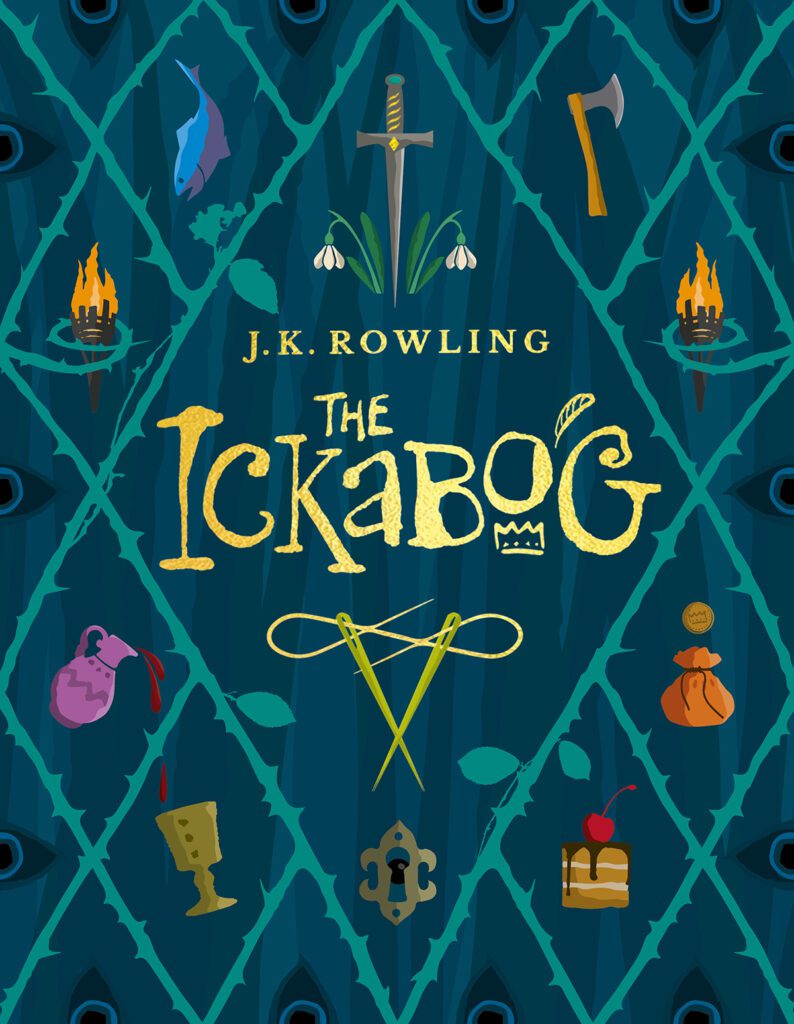
The Ickabog: A Whimsical Journey Through Cornucopia
In J.K. Rowling’s “The Ickabog,” readers are whisked away to the picturesque kingdom of Cornucopia, where the eccentricities of the characters and the mythical aura of the Ickabog create a delightful blend of fantasy and humor. King Fred the Fearless, whose obsession with hats is as amusing as it is endearing, leads the charge against the legendary Ickabog, a creature that has long been the stuff of Cornucopian nightmares.
Rowling’s narrative brilliance shines through the pages, offering glimpses into the lives of characters like Lord Spittleworth, the conniving advisor, and Daisy Dovetail, a courageous young girl. These characters are not just figures in a story; they’re vibrant personalities brought to life through Rowling’s clever pen. Take, for instance, Daisy Dovetail, whose determination and spunk are evident in passages like this:
“Daisy Dovetail had always been brave, but now she was brave and furious. She was angry on behalf of her parents, her friends, and the entire kingdom. And Daisy Dovetail knew that sometimes, the bravest thing a person could do was to speak up against injustice.”
The whimsy of the tale is further heightened by Rowling’s ability to infuse humor into even the most perilous situations. When faced with the Ickabog, King Fred’s attempts at heroism often lead to comical outcomes, such as this moment of levity:
“King Fred, in his ridiculous hat and mismatched armor, tried to look fearless as he faced the Ickabog. ‘Prepare to meet your doom!’ he declared dramatically, but his steed promptly sneezed, covering the king in a cloud of hay.”
The narrative’s charm is bolstered by charming illustrations that capture the essence of Cornucopia. Through these visuals, readers witness the kingdom’s vibrancy, from the colorful landscapes to the peculiar characters. The illustrations, like the following excerpt, add depth to the story:
“In the heart of Cornucopia, the town square buzzed with activity. Bakers sold their freshest pastries, children chased after rolling hoops, and the air was thick with the scent of blooming flowers. It was a scene of everyday magic, where the mundane met the extraordinary.”
However, amidst the laughter and the vivid imagery, some readers might find the plot’s simplicity a double-edged sword. While the tale is enchanting, it lacks the intricate layers and plot twists that characterized Rowling’s previous works, leaving some desiring a deeper narrative complexity.
In essence, “The Ickabog” invites readers on a charming, albeit straightforward, adventure through a fantastical realm. It’s a tale that sparkles with humor, showcases delightful characters, and paints a vivid picture of Cornucopia. While it may not reach the depths of Rowling’s magical world of wizards, it remains a lighthearted journey that will undoubtedly leave readers with a smile on their faces.
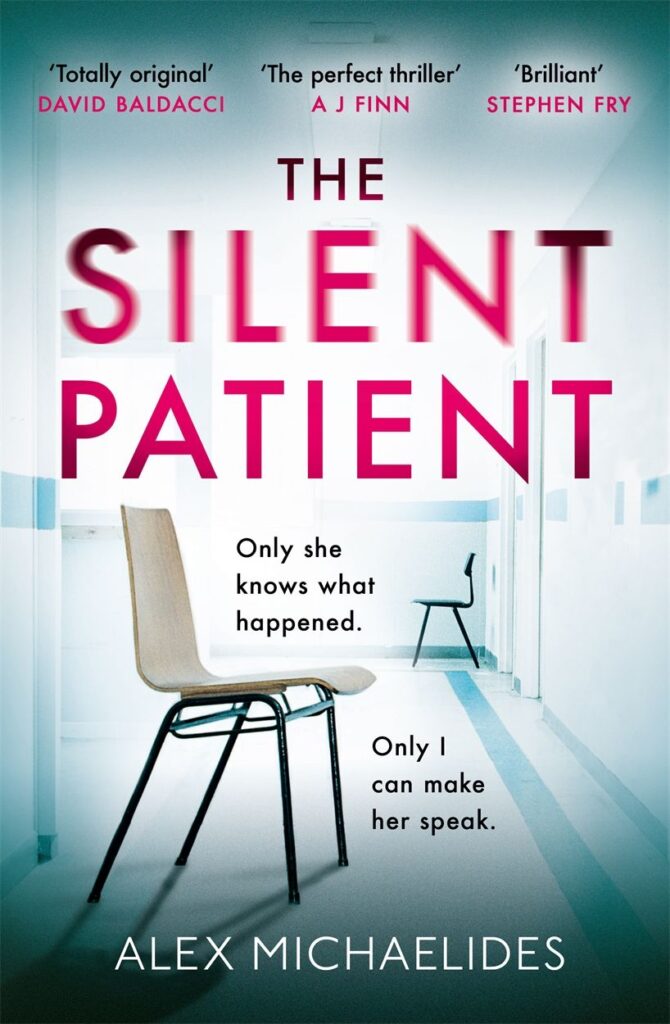
A Deceptive Silence: Unraveling “The Silent Patient”
In the realm of psychological thrillers, “The Silent Patient” by Alex Michaelides is a gripping puzzle that promises much but delivers a bittersweet aftertaste. As I delved into its pages, I anticipated a mind-bending narrative that would challenge my intellect and thrill my senses. While it unquestionably had moments of brilliance, the ultimate resolution left me torn between admiration and a profound sense of disappointment.
The novel’s premise is undeniably intriguing: Alicia Berenson, a celebrated painter, shoots her husband Gabriel in the face and then falls into silence, never uttering another word. The story is narrated by Theo Faber, a psychotherapist who becomes fixated on Alicia’s case. His relentless determination to unearth the truth behind Alicia’s silence propels the story forward, weaving a web of psychological complexity that keeps the reader engaged.
Michaelides’ writing style is undoubtedly commendable, displaying a keen understanding of human psychology and an ability to craft tension-laden scenes. The pacing is masterful, gradually building the suspense to a crescendo that had me eagerly turning the pages. The exploration of trauma, mental health, and the fragility of the human mind is handled with sensitivity and depth, making the novel undeniably thought-provoking.
However, the novel’s brilliance falters in its resolution. The grand reveal, intended to be a shocking twist, left me feeling more bewildered than enlightened. While I appreciate the audacity of the author’s choice, it felt like a cheap shot – a twist for the sake of a twist, sacrificing depth and coherence for a momentary gasp of surprise. The characters, particularly Alicia, seemed to suffer from a lack of development, leaving me disconnected from their fates.
Furthermore, the novel’s reliance on mental health tropes and stereotypes felt regrettably outdated. The portrayal of mental illness lacked nuance, bordering on cliché at times, which diminished the impact of the story’s psychological elements. In an era where mental health awareness is paramount, such oversimplifications feel out of place and, frankly, irresponsible.
In conclusion, “The Silent Patient” is a novel of missed opportunities. Its potential to be a groundbreaking exploration of the human psyche was overshadowed by a resolution that felt forced and unsatisfying. While the journey through the pages was undeniably riveting, the destination left me wanting. For readers seeking a compelling psychological thriller, this book might deliver on the suspense, but be prepared for a resolution that might not live up to the hype.

Your Name – A Tale of Destiny and Connection
As an anime enthusiast, I’ve had the pleasure of delving into various genres and narratives, but few have left a mark as Your Name. This mesmerizing film directed by Makoto Shinkai masterfully blends breathtaking visuals, an emotionally resonant storyline, and a touch of the supernatural to create a cinematic experience that left me profoundly moved.
From the very start, “Your Name” captures the essence of its characters’ longing and curiosity, drawing us into the lives of Mitsuha and Taki. Mitsuha’s life in the serene yet isolated rural town and Taki’s bustling city existence are vividly contrasted, underscoring their mutual desire for something more. The film’s ability to traverse the boundaries of time and space, intertwining their destinies through the mystical bond of dreams, is both enchanting and heart-wrenching. The poignant moments when they wake up in each other’s bodies, navigating the complexities of unfamiliar lives, evoke empathy and humor simultaneously. Through these experiences, we witness the intimate details of their thoughts and emotions, forging an intimate connection with their struggles and aspirations. As the narrative unfolds, the theme of connection takes center stage. The yearning for a meaningful connection, whether through the threads of fate or the echoes of dreams, resonates on a profound level. Shinkai’s exploration of how fleeting moments can shape lives and destinies is both thought-provoking and emotionally charged. When Mitsuha and Taki eventually cross paths in an unexpected twist of fate, the emotional crescendo is staggering. Their shared memories, captured in the intricate folds of their paper tokens, infuse the story with a heartrending poignancy that underscores the depth of their bond.
However, amidst the film’s brilliance, there is a slightly disconcerting aspect that merits attention. “Your Name” occasionally dips into fan service, inserting scenes that seem to prioritize titillation over narrative progression. While the intention might have been to add light-heartedness, these moments can disrupt the otherwise seamless immersion into the characters’ emotions and the overarching plot. It’s a delicate balance that could have been better maintained to preserve the film’s thematic depth. Its ability to resonate on a personal level, while transcending the boundaries of anime, speaks to its universal appeal. While the inclusion of fan service detracts slightly from its overall impact, it remains an anime that tugs at the heartstrings, leaving a lasting impression that underscores the beauty of the human experience. The film’s unique premise of body-swapping through dreams offers an innovative lens to explore themes of identity and connection, resonating with viewers on a profound level. We have seem similar movies in the past like freaky friday but what truly sets “Your Name” apart is its ability to evoke genuine emotions, delving into universal experiences like longing and nostalgia. With unexpected plot twists and a captivating soundtrack, the film creates an immersive cinematic experience that transcends traditional anime, leaving an indelible mark on hearts and minds alike.

The Collector: A Novel
Engaging with “The Collector” by Daniel Silva was a literary journey that pulled me deep into a world of espionage, intrigue, and artistry. From the moment I embarked on this thrilling adventure, I was immersed in a plot that seamlessly blended high-stakes action with intricate plot twists. At the heart of the story is Gabriel Allon, a captivating protagonist who serves as an art restorer and an Israeli intelligence agent. Silva’s masterful character development transforms Allon into a multi-dimensional figure, complete with his own vulnerabilities and strengths. As I followed Allon’s pursuit of an enigmatic art thief, I couldn’t help but be drawn into his personal struggles and his unwavering dedication to his craft and his mission.
The plot’s unique blend of art and espionage sets “The Collector” apart, injecting a fresh and compelling dimension into the narrative. Silva skillfully weaves the world of fine arts with the suspense of espionage, creating a captivating backdrop that heightens the tension and stakes. The meticulous attention to detail, both in the art restoration process and the intelligence operations, serves to enrich the storytelling, making the entire experience more immersive. What truly sets “The Collector” apart is Silva’s ability to create a web of complex characters, each with their own motives and secrets. The layers of deception, moral ambiguity, and unexpected alliances kept me on the edge of my seat, eager to uncover the next twist. As the lines between friend and foe blur, I found myself constantly reevaluating allegiances, mirroring the characters’ own uncertainties.
Silva’s writing style effortlessly weaves together suspenseful action sequences with moments of introspection and emotion, making the characters feel relatable even in the midst of high-stakes scenarios. The fusion of well-researched intelligence operations and the intricacies of art restoration adds a layer of authenticity that elevates the narrative.
In “The Collector,” Daniel Silva successfully crafts a spellbinding tale that combines espionage, art, and human complexities into an unputdownable thriller. As I turned the pages, I was swept away by the seamless fusion of action, character development, and a unique narrative backdrop. It’s a literary journey that will leave readers both entertained and intellectually engaged.
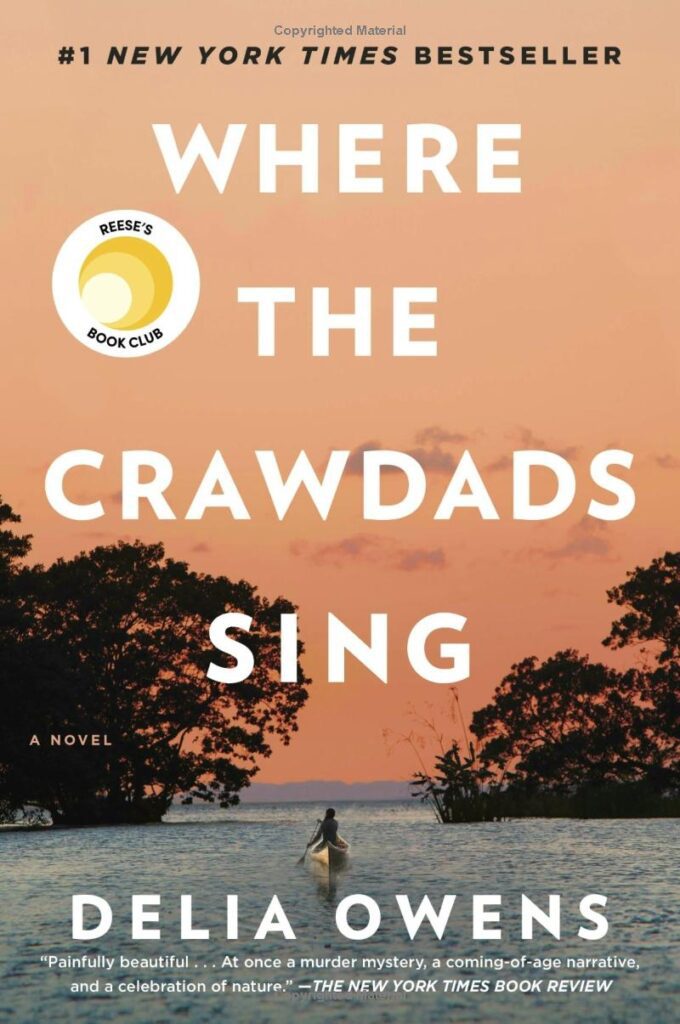
Where the Crawdads Sing by Delia Owens
“Where the Crawdads Sing,” penned by Delia Owens, is a mesmerizing work of fiction that intertwines the wonders of nature with the mysteries of the human heart. Set against the backdrop of the lush marshes of North Carolina, this novel captures the essence of coming-of-age, romance, and a gripping murder investigation. With exquisite prose and a captivating narrative, Owens transports readers to a world where the lines between the wild and human emotion blur.
Delia Owens’ masterful storytelling immediately draws readers into the rich tapestry of the North Carolina marshlands. Her vivid descriptions of the landscape evoke a sense of wonder and curiosity, making nature itself a central character in the story. From the delicate flutter of butterfly wings to the haunting calls of marsh creatures, Owens skillfully weaves the natural world into the lives of her characters. This seamless integration enhances the novel’s allure and offers a unique reading experience.
At the heart of “Where the Crawdads Sing” is the enigmatic Kya Clark, known as the “Marsh Girl” to the locals. Abandoned by her family and left to fend for herself, Kya grows up in the marsh, forming a deep bond with its inhabitants. Her journey from childhood innocence to a self-reliant young woman is both heartrending and inspiring. Owens delicately explores themes of loneliness, acceptance, and the strength that arises from solitude, making Kya a character readers can’t help but empathize with.
Interwoven with Kya’s story is a compelling mystery that spans decades—the suspicious death of a local man. As Kya becomes entwined in the investigation, the novel takes an unexpected turn, delving into themes of societal prejudice, small-town gossip, and the complexities of human relationships. The dual timeline narrative adds depth to the plot, gradually unraveling the events that led to the tragedy.
Delia Owens’ writing is a feast for the senses. Her poetic descriptions transport readers to the heart of the marshlands, allowing them to feel the mud squelching beneath their feet and hear the rustle of reeds in the wind. With a keen eye for detail and a sensitivity to human emotions, Owens crafts characters who are flawed yet deeply relatable. This authenticity breathes life into the narrative, creating an emotional resonance that lingers long after the final page.
“Where the Crawdads Sing” is a tour de force that seamlessly combines the beauty of nature with the intricacies of human connection. Delia Owens’ storytelling prowess shines through as she navigates themes of love, loss, and the enduring power of resilience. This novel is a testament to the magic that can arise when premium writing meets a captivating narrative, leaving readers spellbound and craving more.